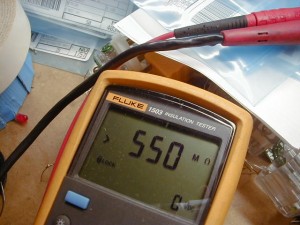scott2000 said:That's right.....
But it's not worth checking that far if the capacitance doesn't even measure normal.....
ok
scott2000 said:That's right.....
But it's not worth checking that far if the capacitance doesn't even measure normal.....
EmRR said:????
0,22 is 0.22. Surely film. The other pic is 1/250, also film in that size.
you can measure that too...synthiaks said:They might measure correct uF but still be DC Leaky, or am i wrong here?
Im not a big tube guy but isn't this caps used to Couple tube stages?
So if they are ok at 100V but starts to let through DC at 200V they are unusable for High voltage but could be used in some Guitar Filter i guess
JohnRoberts said:you can measure that too...
JR
Tubetec said:I have one of these units , its ancient ,but it still works ,tests up to a 450 volt cap and gives a reading on the magic eye. You'll most likely need to rewire the mains with three core cable and plug to make it safer , Id also be careful not to touch the terminals while you do the leakage test as there could be hundreds of volts across them .
yes but of course do it carefully... could be as simple as applying expected voltage to one end, and VOM current meter from other end to ground.synthiaks said:If one wouldn't use a Heathkit TI-28 or similar is this as easy as putting voltage on one end of the capacitor and a resistor to ground on the other and then measure voltage drop (if any) over the resistor or is it more to this?
Not that I would like to put 400V on my bench just like that ( as said, I'm not a tube guy)
S

Khron said:In signal stages it's not even all that bad, but there are dozens (or even hundreds, if not more) of photos online of failed metallized-paper Rifa X2 / Y2 capacitors (used across the incoming mains)... Just sayin'...
https://www.google.com/search?q=rifa+failed&client=firefox-b-d&source=lnms&tbm=isch&sa=X&ved=2ahUKEwjNn-y9_8nnAhVmxaYKHZoWAvQQ_AUoAXoECBMQAw&biw=1622&bih=740
(The logic being, since these were supposed to be designed for 24/7 across-the-mains usage, and still crapped out... How much can you trust even older parts using the same technology, but made for possibly less strenuous duty?)
synthiaks said:Honestly the time it would take to test a paper capacitor for leakage I have a brand new foil one installed.